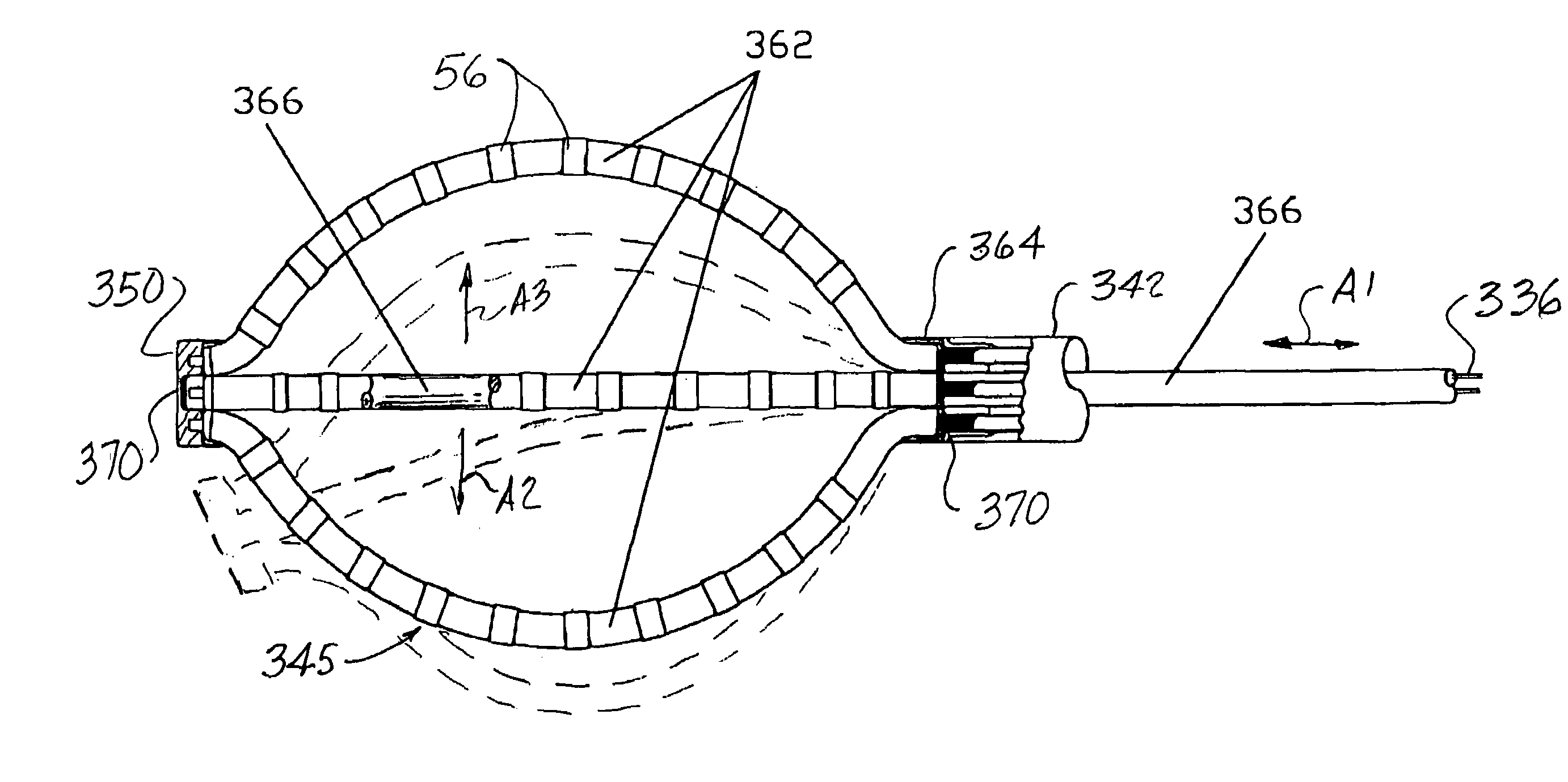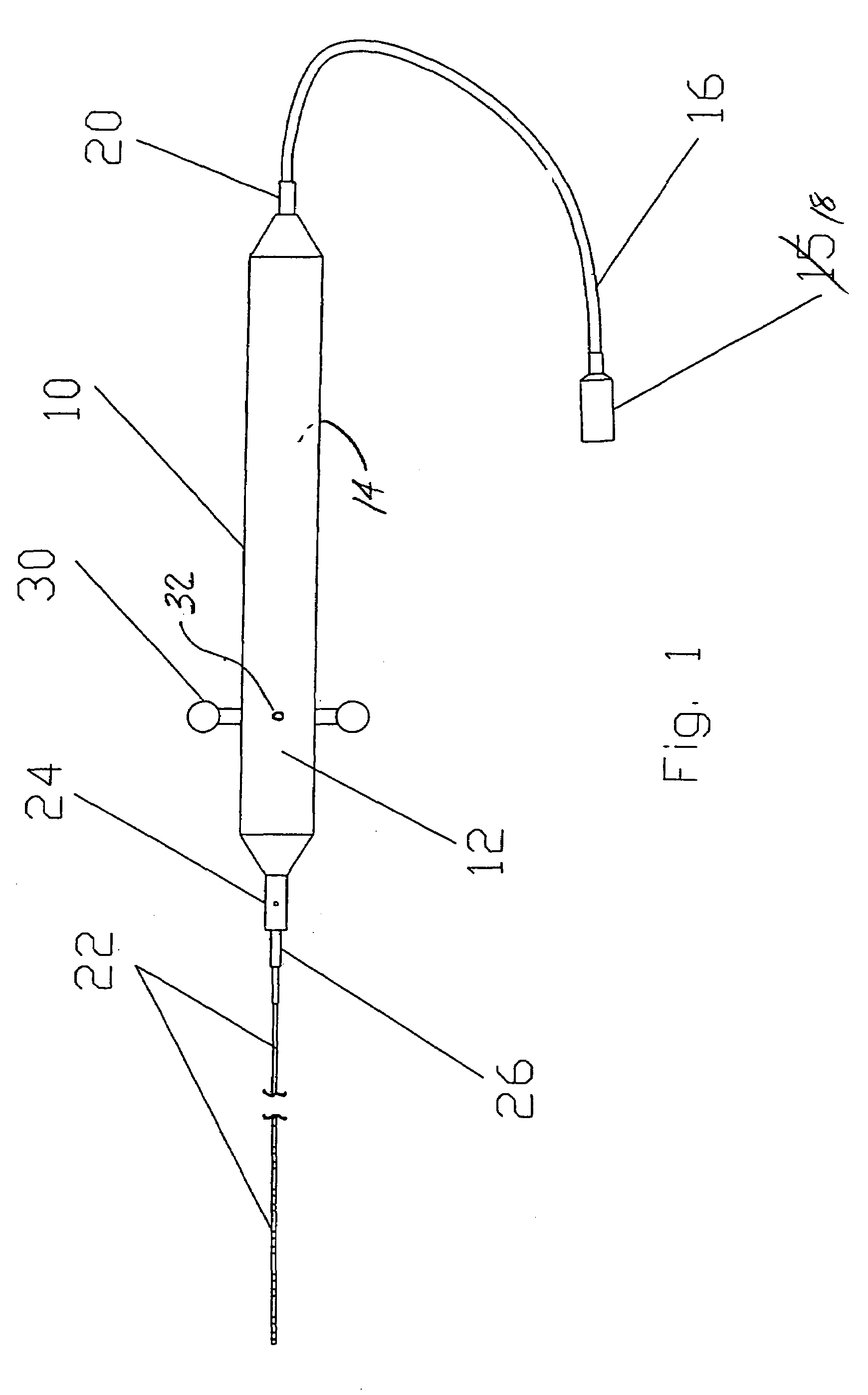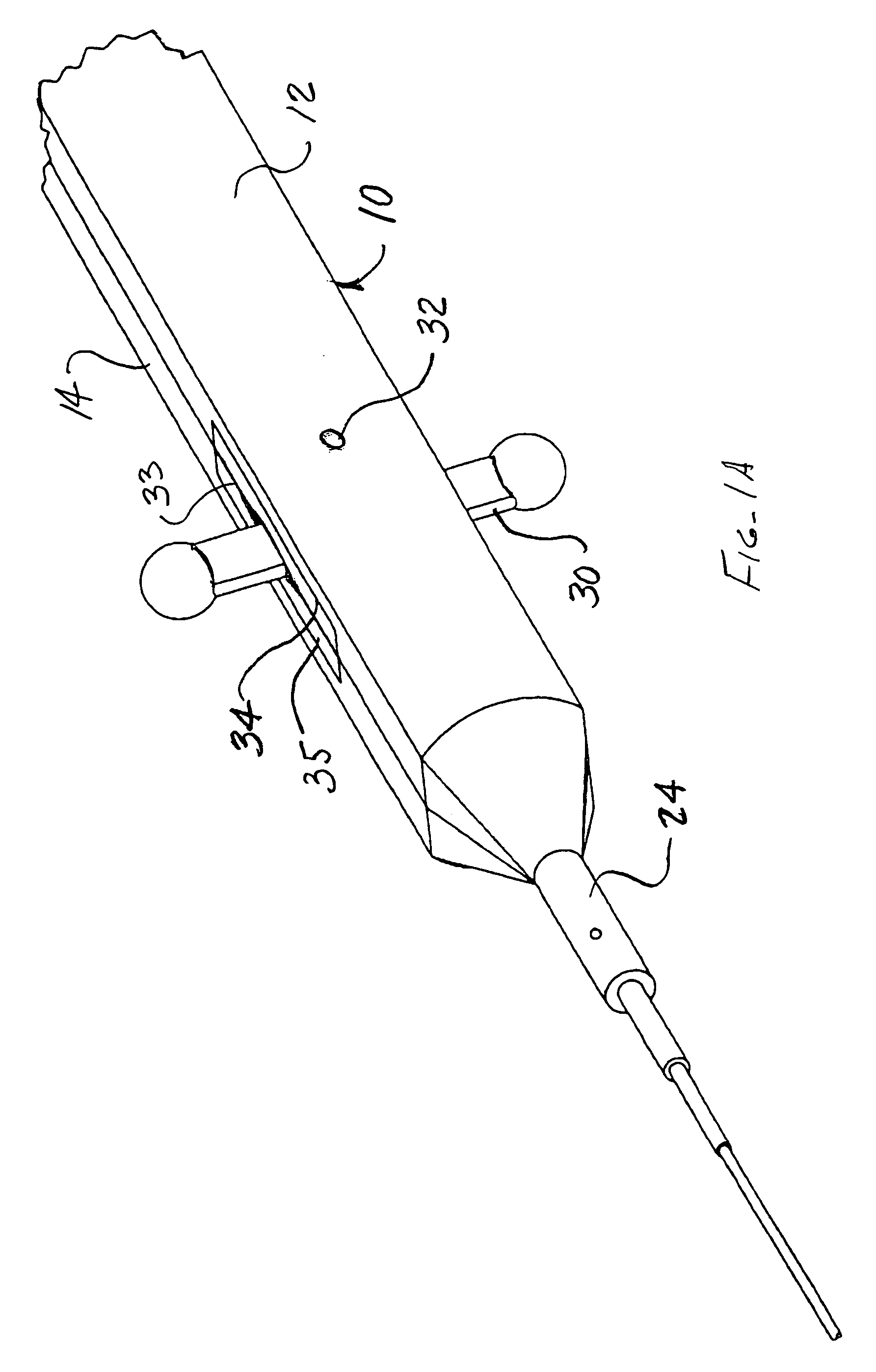Steerable diagnostic catheters
a catheter and catheter technology, applied in the field of medical diagnostic equipment, can solve the problems of inability to easily see defects, inability to remove catheters, and inability to damage the organ itself, so as to achieve the effect of small size, small basket size and shape, and easy modification
- Summary
- Abstract
- Description
- Claims
- Application Information
AI Technical Summary
Benefits of technology
Problems solved by technology
Method used
Image
Examples
first embodiment
[0079]FIGS. 9-9C illustrate in some detail the structure of an alternate embodiment of the present invention having a catheter body 22′ that likewise forms a bi-directionally steerable catheter means. As with the first embodiment, a proximal portion of the catheter body 22′ is formed by a braided tubing 42′. A distal or probe end assembly 45′ of the catheter body 22′ is formed by a tubular member 44′ having a pair of longitudinally extending lumens 54′ formed therein through which the steering wire 36 is passed. A first joint 46′ is formed at the point where the braided proximal portion 42′ meets the probe end member 44′. A second joint 48′ is formed where a distal tip 50′ is attached to the member 44′.
[0080]As opposed to the first embodiment of the bi-directionally steerable unit, in this embodiment, a separate steering wire guide (52 in FIGS. 7 and 7A) is not utilized. As is perhaps best illustrated in FIGS. 9 and 9A, the distal tip 50′ contains no anchoring means for the steering...
second embodiment
[0091]As shown in FIG. 17, the unidirectionally steerable catheter probe end assembly 145′ also utilizes a solderless (weldless) connection method to make ohmic contact between each signal wire 28 and a corresponding ring electrode 56.
[0092]FIGS. 19-21 illustrate the structure of a fixed curve shaped catheter probe end assembly 245. The structure of the catheter body is equivalent to that of the steerable embodiments, with a proximal portion of the catheter body covered with a braided tubing 242, and a distal or probe end member 244 of the catheter body formed by an eleven lumen tube. A first joint 246 is formed at the point where the distal end of tubing 242 meets the proximal end of the probe member 244. The fixed curve shaping of the probe member portion of the catheter body is accomplished by forming a deformable member 255, such as a spring or flexible rod, or even a rubber or plastic material in a state or condition such that when cooled or cured it will form a curved member t...
PUM
 Login to View More
Login to View More Abstract
Description
Claims
Application Information
 Login to View More
Login to View More - R&D
- Intellectual Property
- Life Sciences
- Materials
- Tech Scout
- Unparalleled Data Quality
- Higher Quality Content
- 60% Fewer Hallucinations
Browse by: Latest US Patents, China's latest patents, Technical Efficacy Thesaurus, Application Domain, Technology Topic, Popular Technical Reports.
© 2025 PatSnap. All rights reserved.Legal|Privacy policy|Modern Slavery Act Transparency Statement|Sitemap|About US| Contact US: help@patsnap.com



